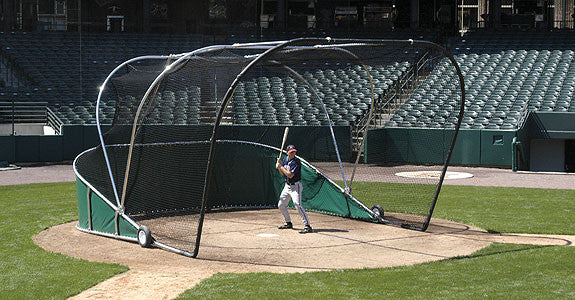As we get into the middle the summer many of us are umpiring tournaments in the final season games before we move into our high school seasons.
Had this unusual situation occur on the field just the other day and wanted to know how you think it should have been called by the umpire.
=====================================
a runner was rounding third base looking back inside to see where the ball was and he ran into the third baseman that had moved all the way to file territory almost in the coaches box. This runner ran into the third baseman did not have the ball fell down ( was asked the injured a little) but after he had fallen to the ground the third baseman receive the ball and take him out. The coach wanted obstruction and to even allow him to score-- the other coach said it was the runners responsibility to know the was going and ran into the third baseman on purpose hoping that there would be a bad throw. What would you rule go to the chatline and give me your answer.
=============================
The umpire ruled as I believe to be correct that it was not obstruction the runner was so far how the baseline running into a player that was clearly away from the bag that it became neither interference nor obstruction just to play that got the runner tagged out. It's unfortunate that he got slightly injured but the third baseman was not in the wrong place he was trying to avoid the runner so no obstruction and the runner did not create interference because there is no interference to involved as a result throw. So no obstruction and no interference we have just the play of the runner getting tagged out at third.
Umpire Arnald Swift
Let's revisit drop third strike. Once again I watched ballgames have umpire ballgames that this gets to be an issue. First a drop third strike is any third strike that's called or swung at that strikes the ground before goes into the catchers glove or falls out of the catchers glove and goes to the ground, not being held securely from the pitch or from the swing.
Now that we've defined that when can you run you can run on third strike meets the definition above any time for spaces open. But here's where the confusion comes if first space is occupied with less than two outs (0 or 1) then the batters out automatically even if he attempts to run deficient not play he cannot advance in the runners can only advance at their own risk. Now here's where the confusion comes in with two outs in the same exact play occurring the batter can run even with first base occupied. Now normally the catcher would just simply throw to the first baseman and the batter would be declared out but we need to keep in mind that all the force rules are still in play. The one that we see most of the time is bases-loaded missed/dropped third strike catchers picks it up and touches home plate which is legal and the runner coming from third base is the one that's declared out.
We got into this discussion just the other day when one of the parents said they couldn't run with the runner at first base because the play before with less than two outs the umpire declared the batter out then sure enough with two outs the batter struck out again with the catcher dropping the ball and they allowed him to run to first with no throw because coaches didn't know the rule and everybody was safe. In the course the coaches one complain that he was out a minute ago and now you changed your ruling and now I safe of course that's not true the difference is one time was with less than two outs. The other time was with two outs.
We need to add to this a little bit, if a catcher does not touch the batter and the batter leaves the batters box and no play is made the runner could be told to run and go directly from where he stands to first base. This is a very valid rule in high school, college, Pro now when you what's major-league ball on TV you see this occur you see the catcher facing the batter in the batter is walking away that's considered a play in the runner has given up and become out but the catcher must acknowledge the runner and the runner must either start to first base or if he gives up he declared out. There's no such thing as leaving a box and being automatically out or leaving the baseline and being automatically out.
Umpire Arnald Swift
drop 3rd strike and what to do and when to do it
I was coaching in a youth game in the day and this came up and while it's been talked about many times is still a problem that comes up so I thought I'd go over a couple of situations that you're going to see especially with the younger ballplayers, and if you happen to be in umpire hopefully you'll be able to handle it correctly.. It's confusing enough that there is a famous case in the World Series where it was called wrong.
Situation = two runners on the same base there are couple of things to consider but the first and foremost is who has the right to that base. The other player is the same as being off the base and can be tagged out on matter where he standing.
First situation = runner on first and second base ball hit to the shortstop who bobbles it but picks it up in time to get in front of the runner at second going to third that runner turned around and goes back to second. Who's out? The runner that was on second originally because of the bases behind him being occupied the ball was hit he had to run, he was forced, so therefore he had no right to second base and when he was touched regardless of priesthood he's out in the runner coming from first base was safe at second because he had the right to that base. Now a little twist on that that you see every once in a while the runner from first turns and starts back and is the first one gets touched, he's out but now the runner that was originally on second no longer has to run and therefore he's safe.. So defense the player really should tag the runner that is advancing to the next base then many times in the runner will panic and leave and you can get a double play.
second situation = runner at third and second nobody on first. The ball is hit to the third baseman and the runner on third does not run but the runner on second does run and comes over and touches third base. Now the third baseman goes to third base and touches both runners. Now the question is who is out-- the runner coming from second base, he didn't have to run therefore he had no right to third base so the original runner on third base is safe.
The defense the players need to be aware of in what order to tag a runner(s) when there are two on base at the same time..
Thoughts from umpire Arnald Swift
This season has started out really very well with not a lot of controversy, you always have some question about balls and strikes, safe and out,, Fair or foul but those are things every umpire is faced with every game.
The interesting question has come up recently about throwing to an unoccupied base,, I've seen it several times now in the real young baseball were when a guy gets on base they're going to steal and the cancers aren't able to stop them. This can certainly come up at any level but it's more prevalent here. Here's the situation And how I read the rule book and how I call it is an umpire. Runner is at first base, no one has at second has the right handed picture comes set and even lift his leg but makes no move to home, and that's important makes no move to home he sees the runner break so he continues to pivot to second base and throw the runner out. Almost the same thing runner at second base and no one on third as the pitcher comes set and raises his leg again making no move toward home plate the runner breaks he simply steps the third and throws the ball in the runners tagged out.
Now what most coaches want to call is a balk, because they through to an unoccupied base,, what they don't know is the rule that follows that first statement where it says except to put out or drive back and advancing runner. That's all that pitcher did. He never made moved home plate in the throw to second it was just the inside out move, spend move, that every pitcher does going back to second base, when he went to third base it's the same exact move every left-hander does going to first base only this time he went to third two put out or drive back and advancing runner.
Just to finalize this I looked up in the major-league rule book the following: The pitcher, while touching his plate, throws, or feints a throw to an unoccupied base, except for the purpose of making a play;
Rule 6.02 (a)(4) Comment (Rule 8.05(d ) Comment): When determining whether the pitcher throws or feints a throw to an unoccupied base for the purpose of making a play, the umpire should consider whether a runner on the previous base demonstrates or otherwise creates an impression of his intent to advance to such unoccupied base.
=============================
((d) The pitcher, while touching his plate, throws, or feints a throw to an unoccupied base, except for the purpose of making a play;
Rule 8.05(d) Comment: When determining whether the pitcher throws or feints a throw to an unoccupied base for the purpose of making a play, the umpire should consider whether a runner on the previous base demonstrates or otherwise creates an impression of his intent to advance to such unoccupied base.
So next time the pitcher throws to a base that somebody advancing to it's not a balk.
Umpire for 40+ Arnald Swift
as we get started with the baseball and softball seasons were going to have this question come up again I was at a game the other day for my grandson, but it doesn't make any difference whether it's peewee baseball or major-league the rules are exactly the same. There are three or four cases that come up every year that coaches, parents, and players don't know what makes a ball fair, what makes a ball foul.
So I'm going to break them down in the simplest of terms:
1. the first and foremost decision to be made on whether a ball is fair or foul is where is the ball located when it is touched by a player. with a player touches it it is where the ball is located that makes it fair or foul, where the player is located makes no difference at all. The most common is that a player at third or first is still it fair territory reaches across the foul line to field the ball and touches the ball while it's over foul territory that makes it foul.
2. A ball that hits off of home plate is neither fair nor file until somebody touches it.
3. the one that seems a little contrary is the one that where the ball hits in fair territory and then lands in foul territory and the umpire calls it fair. Here's the reason why a ball that hits in front of first or third in fair territory then passes over first or third or inside first or third then lands in foul territory is a fair ball because it passed over first or third after it hit the ground in front of those two bases. If it lands for the first time passed first or third in where it lands is determined fair fell.
4. The line is considered in fair territory, if it just touches any part of the line that is a fair ball.
5. One extremely rare situation, I've only seen it twice in 50 years of umpiring but it's there so I say it if a ball hits the pitching rubber and then rebounds into foul territory before it is touched by a player then it is a foul ball, because it never passed first or third.
One last case for you to think about that you seen all the time it really illustrates what I've said above that a player is underneath a pop-up, to the infield, they miss it completely and it lands on the ground and you hear the coaches say let it go foul, let it go foul because they want the ball to land and be touched in foul territory.. Or the reverse of it a ball is rolling down the line from a queue shot and the coaches tell the players touch it touch it in foul territory so that is ruled a foul ball.
Where the ball is been touched that's what makes it fair or foul in front of the bases,, behind first or third it's where it lands.
Arnald Swift umpire 50 years plus (at all levels) coaching 40 years plus
Runner on third touches home before batter is tagged out by first baseman does the run count?
Assuming that the batter has not yet touched first base then no, the run does not score since a run cannot score on a play where the batter-runner is put out before touching first base. However, if the runner had already touched first base and then was tagged out attempting to advance to second then the run does score because the runner from third scored before this happened
Question
What happens if the base ump fails to call a batter out on 3rd strike when 1st base is occupied? The runner ran for 1st, the catcher overthrew 1st base and the runner that was on 1st advanced to home. After the fact, the batter was called out, but the runner was not made to return to 1st. Is this legal or can it be heard by a protest committee if the team continues to play under protest?
Answer
This is legal because, according to the comment on rule 7.09(e),"if the batter or a runner continues to advance after he has been put out, he shall not, by that act alone be considered as confusing, hindering or impeding the fielders." By this clause in the rule, the offensive team should not be penalized just because the batter continued to run the bases. Since this was the right call, any protest would not be upheld by a committee, but it is protestable because it is a rule interpretation.
Even though the offensive team should not be penalized for this, there are some things that should have been done to prevent this scenario from happening. First and foremost, the defensive team should know the situation and, since first base was occupied with
less then two outs, any batter who has a dropped third strike when he is at bat is still out. Also, what I was trained to do in that situation is, when the plate umpire sees the batter start to run up the line towards first, he should follow the batter up the line saying "he's out, he's out, he's still out," while giving the out signal. By doing this, there would be no confusion and everyone would know that the batter is out, even though it was a dropped third strike.
A ball is hit to the second baseman, he bobbles it, and the runner from first is running to second base and kicks the ball, what is the call?
There are two potential rulings on this play. The first one is that, assuming that the kicked ball was unintentional, the umpire will not call the runner out and play shall continue. However, if, in the umpire's mind, the kick was intentional, the ball is dead and the runner is out for interference.
There are several other scenarios also to consider, hits the runner before it get to the fielder. Ruling runner is out, ball is dead, and all runners return to the base they were on, batter is awarded 1st base.
Ball pass a fielder, other than the pitcher, how had a chance to field the ball and hits the runner. -- Ruling-- The ball hitting the runner is ignored and ball is live and played on as any batted ball would be.
I was watching major league baseball the other night in a situation occurred that I thought we discussed a little bit so that umpires wouldn't forget, and more important coaches could learn from it and use it to their advantage.
A foul ball is treated like any fly ball whether it's fair file with runners on base. Coaches tend to forget that they can tag up in advance on a catch from a foul ball. Every flyball whether fair or foul can be advanced on if the runner is tag up and touching the base when the player that's catching the ball touches the ball, side note here it does not have to catch only be touched, and then advances to the next base.
With that said runners and coaches shouldn't forget that when a foul balls caught a need to get back to their base, or the defense can touch the base first and the runner will be declared out on the appeal. I know nobody says anything in the everybody just does it and automatically the umpire calls out the runner if he's left the base to early is trying to return. But that really is an appeal play.
Remember you can advance on a foul ball that's caught or you can be put out a foul ball that caught just something to keep in mind.










